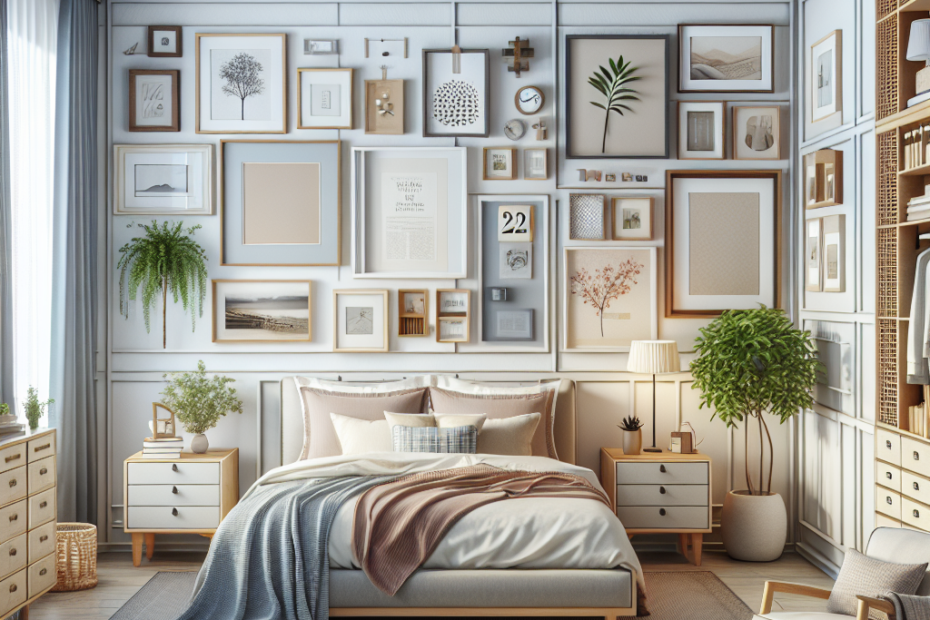“`html
Arranging Bedroom Furniture for Maximum Relaxation
When individuals consider the arrangement of their bedroom furniture, they often find themselves in a dilemma about creating a comfortable and relaxing space. The bedroom should be a sanctuary for rest and tranquility. However, achieving this requires thoughtful planning and implementation of Bedroom Furniture Tips. Understanding how to strategically place furniture can enhance both aesthetics and functionality.
According to a study by the Sleep Council, having a well-arranged room significantly impacts sleep quality, with 77% of respondents confirming that their environment affects their ability to fall asleep (source). Armed with this knowledge, they can make more informed choices on how to set up their bedroom for optimal comfort.
Key Bedroom Furniture Tips
1. The Bed: The Central Piece
The bed is the primary element in any bedroom and its position can greatly influence relaxation. They should place it against the longest wall in the room, ensuring it is easily accessible from both sides. Many experts recommend positioning the bed away from windows to minimize disruption from outside noise and light.
2. Nightstands: Convenience and Functionality
Nightstands should be easily reachable from the bed. They serve both practical and decorative purposes, providing space for bedside essentials. Ideally, nightstands should be the same height as the mattress to allow easy access.
3. Declutter with Dressers
Dressers are key to maintaining an organized space. Placing them along a wall, preferably not blocking any natural light sources, can help maximize floor space and keep the room from feeling cramped. Additionally, using a dresser with a mirror can create the illusion of more space.
4. Use of Lighting
Proper lighting can set the mood for relaxation. They should use a mix of ambient, task, and accent lighting. Consider lamps with dimmers to adjust the brightness as needed. Place lamps on nightstands for reading, or hang pendant lights to save space.
5. Creating a Seating Area
If space permits, adding a seating area can provide a cozy spot for reading or relaxation. A comfortable chair or a small loveseat can be placed in a corner along with a small side table. This addition enhances the room’s functionality without compromising its relaxing vibe.
Statistics on Bedroom Arrangement
| Factor | Improvement in Sleep Quality (%) |
|---|---|
| Proper Bed Placement | 27% |
| Strategic Use of Lighting | 23% |
| Clutter Reduction | 18% |
| Addition of Seating Area | 15% |
The data indicates how every element in the room plays a pivotal role in enhancing the overall comfort and relaxation that the space provides. It highlights the necessity of personalizing these tips to fit individual preferences and spatial constraints.
Key Takeaways
- Position the bed against the longest wall for accessibility and minimize disruptions by windows.
- Nightstands should match the height of the mattress for easy reach.
- A clutter-free space with appropriately placed dressers enhances relaxation.
- Effective use of mixed lighting can create a soothing ambiance.
- A cozy seating area can add functionality and comfort.
FAQ
-
How important is bed positioning in a bedroom?
Bed positioning is crucial as it can affect access, sleep quality, and overall room balance. Placing it against a stable wall can reduce disturbances from windows or doors.
-
Can the placement of nightstands affect relaxation?
Yes, having nightstands within easy reach ensures convenience and comfort, helping to keep the essentials close by without disturbing the relaxation process.
-
What role does decluttering play in bedroom relaxation?
Decluttering is vital as a tidy room promotes peace of mind and helps individuals relax better, contributing to better sleep quality.
-
Is there a benefit to having a seating area in the bedroom?
Yes, a seating area can provide additional space for unwinding, reading, or simply taking a moment to relax away from the bed.
-
How does lighting affect bedroom relaxation?
Proper lighting can drastically impact the ambiance, with dimmable lights allowing for mood adjustment and creating a calming environment conducive to relaxation.
“`
This blog post combines practical advice, statistics, and a user-friendly FAQ section to offer comprehensive insights into arranging bedroom furniture. Integrating these tips can help create an inviting, peaceful bedroom conducive to relaxation and improved sleep quality.
